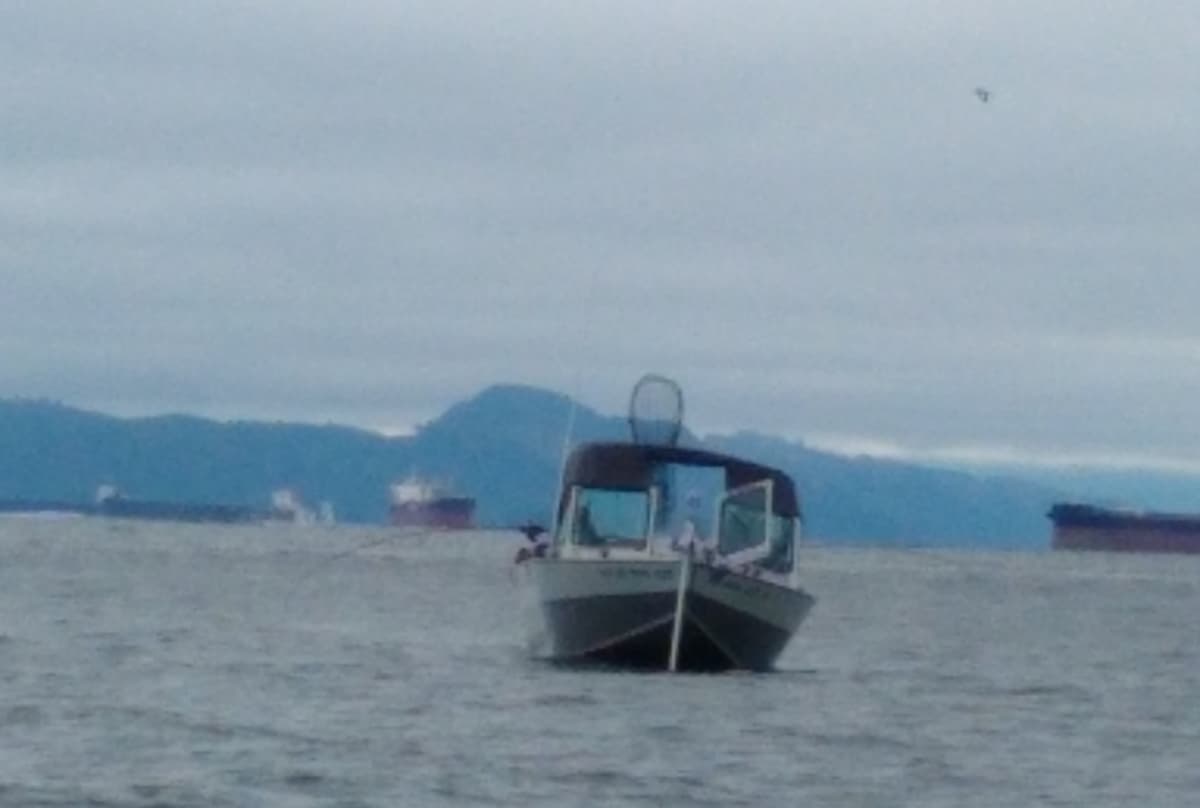When it comes to a trolling motor’s overall life expectancy, some people claim to have fully functional trolling motors 10, 12, or even 15 years old. Some people may tell you stories of frustration with specific brands or have sob stories of a brand-new trolling motor that quit on them after only one short fishing season.
So, how many years will a 24v trolling motor last? You should expect five years or more of life from your electric trolling motor. However, with good maintenance and proper storage, it is common to get over ten years of life out of your electric trolling motor.
There are other factors, like the quality of materials used by the manufacturer, but most of it has to do with how your trolling motor is maintained and cared for. We are not saying it is not possible that you do everything right, then suddenly your trolling motor blows up on you; that may be the case.
That is where the luck portion of your trolling motor’s existence comes into play. Let us examine overall trolling motor life expectancy and everything you can do to make that life expectancy as long as possible.
Motor Lifespan
Most anglers agree, if you can get five years of reliable operation out of your trolling motor, you pretty much got your money’s worth. However, we do not want to stop at five years. It is just that if you hit the five-year mark, that is a reasonable amount of time not to be disappointed in the performance of your trolling motor.
Often, in the first five years, your trolling motor may not shut down completely, but instead, some minor maintenance may be required, or a part may be needed to be replaced. What are the first trolling motor parts to go, and what are some of the first maintenance issues to arise?
The first parts of having problems are almost always electronic or mechanical. Never do you see structural problems occur early on in the trolling motor’s life. Let us look at some of the common electrical and mechanical issues you may face in the first five years.
Electrical Issues: If you have operational issues with your trolling motor, the first place to start is with the electrical system. There is an excellent chance you can trace most problems back to the battery or the wires.
It would be best if you started with the electrical system because you can troubleshoot many issues without spending a dime by ensuring all your wires, batteries, and the electrical terminals on your trolling motor are correctly connected.
The first step is to use your trolling motor owner’s manual to view the electrical and battery diagram. This will show you exactly how your trolling motor rig should be set up. If you see no issues, then continue to step two.
The second step is to use an electrical multimeter to test all your wires and batteries to ensure that the current is appropriately running through all wires. If you do not have a voltmeter on your batteries, use the multimeter to ensure all your batteries are adequately charged.
If you are correctly wired, all the batteries are full, and the current is running through your setup, then check any electrical accessories that may be causing issues.
Another thing to consider is the distance from the trolling motor to your batteries. You need to make sure you have the correct wire gauge required to carry the necessary amount of current without voltage drop or excessive heat.
Note: If any part of your electrical system is not functioning correctly amperage can increase resulting in motor damage.
Click here for our article Best Gauge Wire for a 24 volt Trolling Motor?
The most common electrical accessory to quit working that may short out, or cause your entire system to malfunction, is if you have electric foot pedal control. Ensure your foot pedal is functioning correctly or remove the foot pedal from your trolling motor setup and try to use it without. If your trolling motor works manually and without the pedal, you will need to replace the foot pedal or only use manual controls from now on.
If you have checked the batteries, the wires, and all the electrical accessories, you may have an internal electrical issue in the motor. It is advised that your trolling motor be taken to a brand-certified service center that can help you further, especially if there is the potential the electrical issue is covered under warranty.
Mechanical Issues: Mechanical issues can be a little more tricky and harder to diagnose on your own without professional help. If you are very mechanically inclined, you can go ahead and take a stab at it; otherwise, we recommend taking it to a brand-certified service center.
Most brands have very generous mechanical warranties; some even have up to five years of warranty coverage for mechanical parts and issues. If you have the option of purchasing an extended warranty, it might be a good idea to consider it.
As a side note, we recommend securing your motor while not in use with a ram mount stabilizer or a simple bungee cord. As of editing this article, I gave a motor forum member instructions on how to replace a damaged steering box because his motor deployed while he was underway. This person got lucky because I lost the lower half of my motor when it deployed at speed.
Do Electric Trolling Motors Lose Power Over Time?
Electric trolling motors can lose power over time due to overall wear and tear. Most of the effects of aging are on moving parts however even electronic parts fail over time.
Electronic Parts
Most of the solid-state electronic parts will last years without issue. There are a few things to help prolong the life of your electronic components.
- First, always unplug or disconnect your motor from your battery before charging. This is where a battery switch can come in handy or a quality trolling motor plug. Disconnecting your motor from the battery will protect your electronics from power surges.
- Second, a quality wiring system can make a huge difference in the life span of your electronics. Use oversize wiring, quality connectors, reliable fuses(or breakers), and batteries that are rated above your amp-hour needs. Spending a little more money upfront can save you money and time in the long run.
On the flip side if one of these parts does fail most fishermen can purchase a new control board and be back on the water in no time.
Moving Parts
Any motor or device with moving parts will suffer from wear over time. These parts mostly consist of the parts in the electric motors such as bearings, seals, springs, brushes, and armature. Of course, don’t overlook the steering box and the deployment assembly, but both of those are less likely to fail.
Most of the parts in the motor are expert level repair but if it is broken why not try to fix it. Bearings, seals, springs, and brushes are cheap. If you do take the motor assembly apart the springs can be a pain. Make sure you get a good seal when closing your motor up, and don’t force it, the armature should slide in easy.
If you fail at this repair as long as you don’t damage the casing or the armature you can send it to a repair center and you only lost the cost of parts.
What Can I Do to Extend My Trolling Motor’s Lifespan?
The easiest way to keep your trolling motor running well for many years is to take care of your motor and to take steps to maintain its upkeep regularly. From cleaning to proper storage, here is a list of some of the small steps that you can take that will have a large effect on your trolling motor’s lifespan.
- Rinse and Repeat: After each use, you will want to rinse your trolling motor with fresh water and remove all debris, mostly plant life. You should have removed any aquatic life from your entire boat and motors before you left the marina or boat launch.
- Inspect the Prop: After each use, inspect your prop to ensure there is no fishing line or weeds entangled in the prop.Go ahead and remove anything you find obstructing your propeller. When inspecting the prop, check the prop nut to ensure it is tight, and check out the prop blade for any knicks or abrasions that need to be smoothed out with sandpaper.
- Lube It Up: Every couple of weeks, it is a good idea to clean and lubricate the shaft with a coating of silicone spray. Ensure the silicone spray is intended for marine use and go ahead and use the spray on any other exposed metal parts. A cleaned and lubricated shaft will ensure smooth deployment and retraction of your trolling motor.
- Proper Storage: When storing your trolling motor, always disconnect the power. This is a great time to check the terminals on your batteries and clean any dirt or remove corrosion with some sandpaper. Also, make sure you fully charge your batteries and store them in a clean and dry environment. If you have a trickle charger to leave the batteries connected to, even better.
Conclusion
Again, most anglers are happy if they see five years of use from their trolling motor, but we know we can do better than that. With a little bit of luck, and some regular care and upkeep, you should be able to keep your trolling motor humming along for 10, maybe even 15 years.
So, how many years will a 24v trolling motor last? It depends on how proactive you are to address any electrical or mechanical issues and how willing you are to take full advantage of your brand’s certified service centers’ expertise. Remember, a lot of problems that arise could easily be covered warranty.
You will not know unless you ask. This kind of proactiveness should also be applied to the upkeep. Regularly clean your trolling motor and its prop. Lubricate the shaft and apply silicone spray to all exposed metal. Check all nuts and bolts to be sure they are tight.
Properly store your trolling motor and disconnect it from power when not in use. Clean all your battery’s terminals with sandpaper when necessary and always keep them fully charged. Follow these basic steps, and you can rest assured you are doing everything possible to extend your trolling motor’s life expectancy.
Click here for our article 9 Reasons We Prefer 24 Volt Trolling Motors
FAQ
Q: What kind of silicone spray should I use to coat my trolling motor’s shaft and other exposed parts?
A: The best kind of silicone spray to use for coating your trolling motor’s metallic parts is an aqueous-based silicone spray. Otherwise, any silicone spray that explicitly states it’s for marine use is ok too.
Q: What should I use to clean my trolling motor battery’s terminals?
A: The best thing you can use is an emery cloth designed specifically for cleaning battery terminals. Otherwise, any fine-grained sandpaper will do.
Q: How do I make my marine batteries last longer?
A: Always store your batteries in a dry location and keep them fully charged when not in use. Use a trickle charger if you have one.
Q: What is the first thing I should look at if my trolling motor is not functioning correctly?
A: The first thing you need to look at is your trolling motor’s electrical system. First, the batteries, then the wires and connectors, then consider seeking a certified professional’s opinion if the problem is not there.



